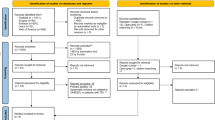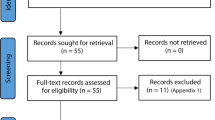Abstract
Introduction A systematic review of existing evidence to determine if trauma in the primary dentition causes alteration in the development of the underlying permanent dentition.
Data sources Six electronic databases (PubMed, Medline, MEDES, Scopus, Lilacs and Embase) were used to search a range of dental terms relating to dental trauma to locate studies between 1972-2020.
Study selection Study selection was carried out by two authors by reviewing title, abstract and then full articles. A third author was consulted if consensus for inclusion was needed. Eligibility criteria included all scientific articles concerning sequalae to the human permanent dentition following trauma to the primary dentition. Only English, German and Spanish languages were included. For evaluation, the studies must have satisfied the following: a) minimum sample of 50 children to be representative; b) radiographic examination; and c) appropriate follow-up period up to permanent successor eruption.
From 537 studies, 18 studies were identified for consideration in the review, comprising of 13 cross-sectional studies, two cohort studies and three case control studies.
Data extraction and synthesis The Newcastle-Ottawa Scale was used to extract data and determine study quality. Only studies determined as high quality were included in the review. Four cross-sectional studies and three case control studies, totalling seven studies, were used. Data from these high-quality studies was summarised into table format.
Results Large variation in study sample size existed from 138-753 traumatised teeth and 78-879 children. Both sexes were included in all studies and the children were aged between 0-17 years.
Some studies found there was no difference in rate of trauma between girls and boys, while others found there was a higher incidence of trauma in boys than girls. The most frequently traumatised teeth were the upper primary central incisors. Whilst most studies covered all types of primary trauma, two only studied intrusion and one specified the type of primary trauma as luxation or fracture injuries.
Whilst some of the studies concluded a higher frequency of defects to permanent teeth following primary intrusion trauma aged four and under, others showed no significant differences between the age of intrusion and the effect to the successor incisor.
Enamel defects of the permanent teeth were the most common sequalae with a wide prevalence reported between 4.5-68.8%. Enamel defects were classified as hypoplasia and hypocalcification. Ectopic or altered eruption, crown or root dilacerations and odontoma development were observed less often, with the latter very rarely.
Conclusions Primary tooth intrusion trauma causes the highest proportion of sequalae presenting as enamel defects. Younger patients experiencing primary trauma are more likely to obtain damage to the succeeding dentition. The existing quality of evidence is limited due to the observational nature of the studies available.
This is a preview of subscription content, access via your institution
Access options
Subscribe to this journal
Receive 4 print issues and online access
$259.00 per year
only $64.75 per issue
Buy this article
- Purchase on Springer Link
- Instant access to full article PDF
Prices may be subject to local taxes which are calculated during checkout
Similar content being viewed by others
References
Von Arx T. Developmental Disturbances in Permanent Successors after Intrusion Injuries to Maxillary Central Incisors. Aust Dent J 1993; 38: 1-10.
Haidich A B. Meta-analysis in medical research. Hippokratia 2010; 14: 29-37.
Altman D G. Systematic reviews of evaluations of prognostic variables BMJ 2001; 323: 224-248.
Wells G A, Shea B, O'Connell D et al. The Newcastle-Ottowa Scale (NOS) for Assessing the Quality of Non-Randomised Studies in Meta-Analyses. 2000.
Lo C K, Mertz D, Loeb M. Newcastle-Ottawa Scale: comparing reviewers' to authors' assessments. BMC Med Res Methodol 2014; 14: 45.
Author information
Authors and Affiliations
Ethics declarations
The authors declare no conflicts of interest.
Rights and permissions
About this article
Cite this article
Gibbison, R., Crozier, R. Does primary trauma lead to developmental defects in permanent teeth?. Evid Based Dent 23, 112–113 (2022). https://doi.org/10.1038/s41432-022-0808-z
Received:
Accepted:
Published:
Issue Date:
DOI: https://doi.org/10.1038/s41432-022-0808-z



